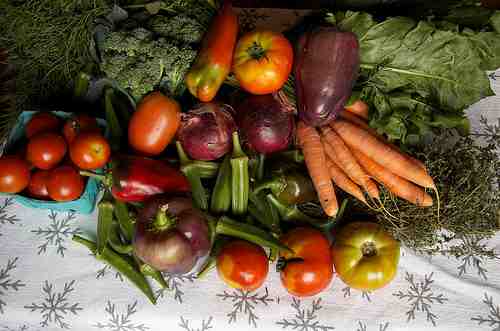The Farm to School Phenomenon
Most of us are familiar with the term ‘Farm to Table’ – a popular social movement promoting the sourcing of farm-fresh, organic produce for local restaurants. The Farm to Table revolution has swept the country, creating new networks between restaurateurs, farms and communities while providing healthier, fresher dining experiences for patrons.
In the wake of such resounding success from the Farm to Table movement, a new phenomenon has emerged that will revolutionize the lives of our youngest generation: Farm to School.
Through programs such as the National Farm to School Network, as well as the U.S. Department of Agriculture and other local organizations, thousands of schools across the country are transforming the way students experience food and nutrition. The USDA even offers grants to aid in the startup and maintenance of programs such as the Farm to School movement.
The core elements of the Farm to School movement are focused on Education, Procurement and Community. Successful Farm to School programs can have a tremendous positive impact and create amazing benefits for everyone involved, including educators, farmers and most importantly – students. Let’s take a deeper look at these three components in more detail.
Education
Establishing nutrition standards, farm fresh food programs and networking with local farmers affords schools a unique opportunity to provide new and innovative educational programs for students. No longer is nutrition education restricted to a standard health class. Students can engage directly with the elements that comprise the Food to School program. They’ll learn about agriculture, nutrition, how farms work, the economics of food in the local community, discover new foods and much more.
Furthermore, infusing educational opportunities within a better food sourcing alternative will develop healthier nutrition habits for students as they learn through experience first-hand and understand the importance of fresh, organic produce.
Procurement
Successful Farm to School programs start by creating partnerships with local farms, ranches and fisheries. The networking created through procuring fresh, organic food goes beyond the traditional supplier-purchaser relationship. Everyone involved works together and new friendships are kindled, while students and educators enjoy a new height of premium foods available in their kitchens.
Students are rewarded with excellent meals, and they can even sample foods from prospective suppliers during promotional Snack Time events. These special sampling promotions serve as both an educational opportunity for students, and a community opportunity for new food suppliers wishing to exhibit their freshest produce.
Community
In addition to sourcing food from local farms, the Farm to School program encourages schools to establish community gardens which serve to complement the procurement channels. More than just a locally managed food source, these gardens serve as a community-building catalyst and provide additional educational opportunities for students.
Educators, parents and children collaborate together, learn agricultural skills and network together while growing their own fresh, organic food. The school as a whole benefits too, with fresh herbs and organic produce. Community gardens also serve to improve the local ecosystem and promote healthier environmental habits for everyone.
Author Mary Blackmon is the creator and founder of Farm Star Living – the lifestyle brand that celebrates farming and farmers

